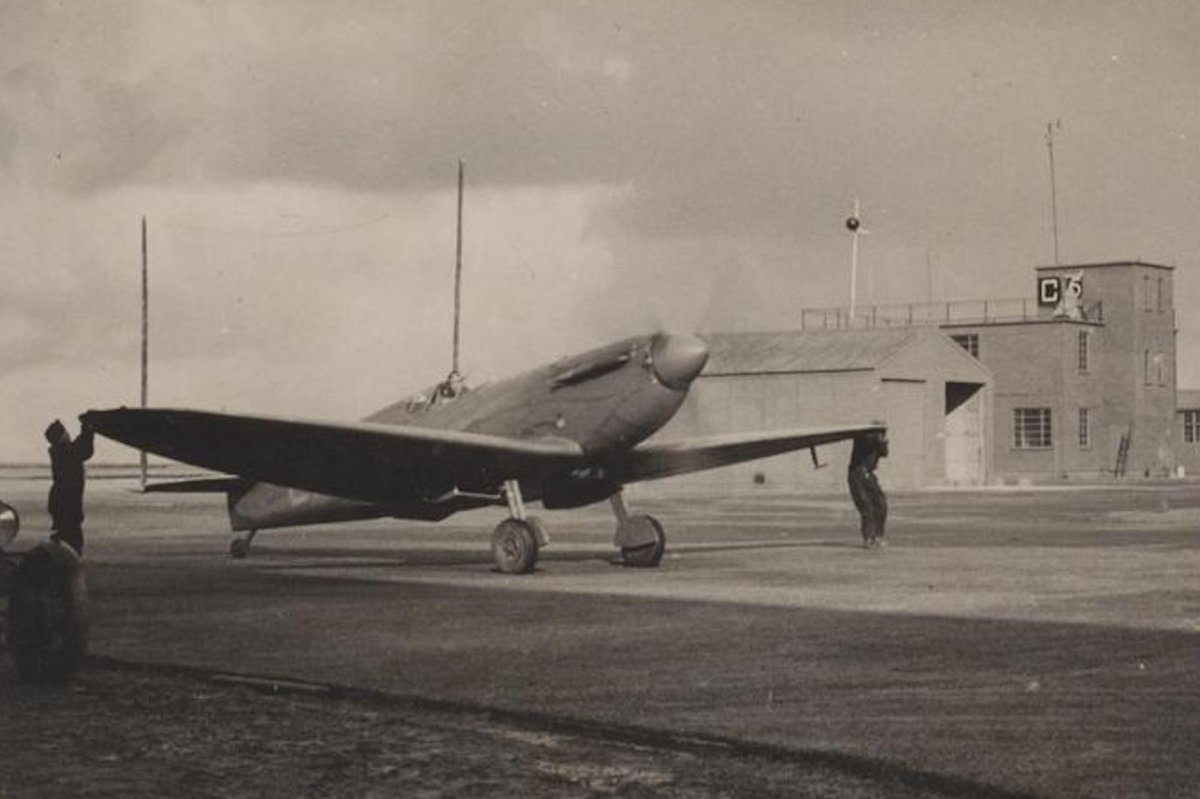A Second World War aircraft could take to the skies again as early as 2025, more than 80 years after being shot down by German forces.
The "AA810 Spitfire," which belonged to the British Royal Air Force (RAF), is being rebuilt by an international team headquartered in the United Kingdom. Now the University of Sydney in Australia has announced that a group of its experts is fabricating engine parts for the plane using industrial 3D-printing techniques, also known as additive manufacturing.
"The restoration of Spitfires has been a growing industry since the 1960s, however, rarely does an aircraft with such a significant history get returned to flight," Tony Hoskins with the Spitfire AA810 project told Newsweek. "The help offered to us by the University of Sydney is certainly a huge help in progressing the project."
"Emerging from a secret workshop in the center of a town in 1941, AA810 would go on to be flown by a variety of individuals on highly clandestine work [that was] vital to the intelligence services for the strategic allied campaign in the Second World War. This significant aircraft...is one of the last remaining Mk1 Spitfires—rarer still in being modified to fly without guns or armor."

The AA810 Spitfire was shot down by two German fighter planes in March 1942 while undertaking a reconnaissance mission to photograph the Nazi battleship Tirpitz along the coast of Norway.
At the time, the aircraft—part of the RAF's unarmed Photographic Reconnaissance Unit (PRU)—was piloted by 22-year-old Scotsman, Flight Lieutenant Alastair "Sandy" Gunn, who managed to bail out and survive the crash.
Even though the plane caught fire and crashed from a significant height, it plowed into deep snow on a mountainside, which slowed the Spitfire down and lessened the impact, leaving it relatively intact. The aircraft came to rest in a peat bog below the snow, which helped to preserve it in relatively good condition.
After the crash, Gunn was captured and subsequently transferred to Germany where he was interrogated by the Nazi intelligence services. Eventually, the pilot was sent to the Stalag Luft III prisoner-of-war camp, located in what is now Poland. There, he took part in a famous prisoner breakout in March 1944—an event dramatized in the classic 1963 film, The Great Escape, starring actor Steve McQueen.
While 76 prisoners, including Gunn, managed to escape the camp by tunneling out of it, all but three were recaptured. The Nazis subsequently executed the young Scottish pilot and many of the other escapees.
The crash site of the lost AA810 was eventually discovered by Hoskins, a U.K.-based Spitfire historian and restorer, with the help of people in the local area, more than 75 years after the plane was shot down.
The remains of the plane were then transferred to the U.K. where the aircraft is currently being restored, incorporating parts from other Spitfires. Now, experts at the University of Sydney are rebuilding parts for the plane's Rolls Royce Merlin V12 engine, namely, the exhaust manifolds. These parts help funnel exhaust gases away from the engine.
Bruce McLean, the chief engineer at the Sydney Manufacturing Hub, is leading this effort. To produce the parts, McLean and his team scanned one of the original manifolds salvaged from the wreck, which served as a blueprint for reverse-engineering the others.
"The Sydney Manufacturing Hub is supporting the AA810 Restoration Project using advanced digital scanning technology, computer-aided design and additive manufacturing to reverse-engineer and restore the six original exhaust stacks from the aircraft in a modern superalloy material known as Inconel," McLean said in a press release.
"These were originally handmade articles that were damaged almost beyond recognition in the crash and are unobtainable today. Using modern manufacturing tools enables faithful and fully functional replicas to be manufactured and eventually flown on the restored Spitfire AA810 airframe," he said. "The Spitfire is iconic. It is one of the machines that won the war."
While there is no exact date for when the AA810 could take its first flight after being restored, Hoskins said the event will likely not take place until the latter part of 2025, or even the spring of 2026.
The pilots of the RAF's PRU faced a daunting task when flying their reconnaissance missions. Their planes were stripped of weapons and armor to make them lighter and enable them to take on additional fuel, thus extending their range. Around 1,700 airmen who flew with the unit have been identified, but only 652 have been confirmed as having survived the war.
Do you have a tip on a science story that Newsweek should be covering? Do you have a question about the Second World War? Let us know via science@newsweek.com.
Uncommon Knowledge
Newsweek is committed to challenging conventional wisdom and finding connections in the search for common ground.
Newsweek is committed to challenging conventional wisdom and finding connections in the search for common ground.
About the writer
Aristos is a Newsweek science reporter with the London, U.K., bureau. He reports on science and health topics, including; animal, ... Read more
To read how Newsweek uses AI as a newsroom tool, Click here.






